N E W M E D I A A R T . E U
> Paris Photo
> Art, technology and AI
> Immersive Art
> Chroniques Biennial
> 7th Elektra Biennial
> 60th Venice Biennial
> Endless Variations
> Multitude & Singularity
> Another perspective
> The Fusion of Possibilities
> Persistence & Exploration
> Image 3.0
> BioMedia
> 59th Venice Biennale
> Decision Making
> Intelligence in art
> Ars Electronica 2021
> Art & NFT
> Metamorphosis
> An atypical year
> Real Feelings
> Signal - Espace(s) Réciproque(s)
> On Combinations at Work
> Human Learning
> Attitudes and forms by women
> Ars Electronica 2019
> 58th Venice Biennale
> Art, Technology and Trends
> Art in Brussels
> Plurality Of Digital Practices
> The Chroniques biennial
> Ars Electronica 2018
> Montreal BIAN 2018
> Art In The Age Of The Internet
> Art Brussels 2018
> At ZKM in Karlsruhe
> Lyon Biennale 2017
> Ars Electronica 2017
> Digital Media at Fresnoy
> Art Basel 2017
> 57th Venice Biennial
> Art Brussels 2017
> Ars Electronica, bits and atoms
> The BIAN Montreal: Automata
> Japan, art and innovation
> Electronic Superhighway
> Lyon Biennale 2015
> Ars Electronica 2015
> Art Basel 2015
> The WRO Biennale
> The 56th Venice Biennale
> TodaysArt, The Hague, 2014
> Ars Electronica 2014
> Basel - Digital in Art
> The BIAN Montreal: Physical/ity
> Berlin, festivals and galleries
> Unpainted Munich
> Lyon biennial and then
> Ars Electronica, Total Recall
> The 55th Venice Biennale
> The Elektra Festival of Montreal
> Digital practices of contemporary art
> Berlin, arts technologies and events
> Sound Art @ ZKM, MAC & 104
> Ars Electronica 2012
> Panorama, the fourteenth
> International Digital Arts Biennial
> ZKM, Transmediale, Ikeda and Bartholl
> The Gaîté Lyrique - a year already
> TodaysArt, Almost Cinema and STRP
> The Ars Electronica Festival in Linz
> 54th Venice Biennial
> Elektra, Montreal, 2011
> Pixelache, Helsinki, 2011
> Transmediale, Berlin, 2011
> The STRP festival of Eindhoven
> Ars Electronica repairs the world
> Festivals in the Île-de-France
> Trends in Art Today
> Emerging artistic practices
> The Angel of History
> The Lyon Biennial
> Ars Electronica, Human Nature
> The Venice Biennial
> Nemo & Co
> From Karlsruhe to Berlin
> Media Art in London
> Youniverse, the Seville Biennial
> Ars Electronica, a new cultural economy
> Social Networks and Sonic Practices
> Skin, Media and Interfaces
> Sparks, Pixels and Festivals
> Digital Art in Belgium
> Image Territories, The Fresnoy
> Ars Electronica, goodbye privacy
> Digital Art in Montreal
> Art, technology and AI
> Immersive Art
> Chroniques Biennial
> 7th Elektra Biennial
> 60th Venice Biennial
> Endless Variations
> Multitude & Singularity
> Another perspective
> The Fusion of Possibilities
> Persistence & Exploration
> Image 3.0
> BioMedia
> 59th Venice Biennale
> Decision Making
> Intelligence in art
> Ars Electronica 2021
> Art & NFT
> Metamorphosis
> An atypical year
> Real Feelings
> Signal - Espace(s) Réciproque(s)
> On Combinations at Work
> Human Learning
> Attitudes and forms by women
> Ars Electronica 2019
> 58th Venice Biennale
> Art, Technology and Trends
> Art in Brussels
> Plurality Of Digital Practices
> The Chroniques biennial
> Ars Electronica 2018
> Montreal BIAN 2018
> Art In The Age Of The Internet
> Art Brussels 2018
> At ZKM in Karlsruhe
> Lyon Biennale 2017
> Ars Electronica 2017
> Digital Media at Fresnoy
> Art Basel 2017
> 57th Venice Biennial
> Art Brussels 2017
> Ars Electronica, bits and atoms
> The BIAN Montreal: Automata
> Japan, art and innovation
> Electronic Superhighway
> Lyon Biennale 2015
> Ars Electronica 2015
> Art Basel 2015
> The WRO Biennale
> The 56th Venice Biennale
> TodaysArt, The Hague, 2014
> Ars Electronica 2014
> Basel - Digital in Art
> The BIAN Montreal: Physical/ity
> Berlin, festivals and galleries
> Unpainted Munich
> Lyon biennial and then
> Ars Electronica, Total Recall
> The 55th Venice Biennale
> The Elektra Festival of Montreal
> Digital practices of contemporary art
> Berlin, arts technologies and events
> Sound Art @ ZKM, MAC & 104
> Ars Electronica 2012
> Panorama, the fourteenth
> International Digital Arts Biennial
> ZKM, Transmediale, Ikeda and Bartholl
> The Gaîté Lyrique - a year already
> TodaysArt, Almost Cinema and STRP
> The Ars Electronica Festival in Linz
> 54th Venice Biennial
> Elektra, Montreal, 2011
> Pixelache, Helsinki, 2011
> Transmediale, Berlin, 2011
> The STRP festival of Eindhoven
> Ars Electronica repairs the world
> Festivals in the Île-de-France
> Trends in Art Today
> Emerging artistic practices
> The Angel of History
> The Lyon Biennial
> Ars Electronica, Human Nature
> The Venice Biennial
> Nemo & Co
> From Karlsruhe to Berlin
> Media Art in London
> Youniverse, the Seville Biennial
> Ars Electronica, a new cultural economy
> Social Networks and Sonic Practices
> Skin, Media and Interfaces
> Sparks, Pixels and Festivals
> Digital Art in Belgium
> Image Territories, The Fresnoy
> Ars Electronica, goodbye privacy
> Digital Art in Montreal
> >
DIGITAL ART IN BELGIUM
by Dominique Moulon [ March 2008 ]
There are a good number of festivals in Belgium that function around emerging artistic practices, among them being Almost Cinema, Artefact, Courtisane, City Sonics, Happy New Ears, Jonctions, Transnumériques, VIA and lastly Cimatics, whose fifth edition was held over three evenings last November at Beursschouwburg in Brussels. So what was there to do during the day if not meet the main actors in a digital scene that is in full effervescence?
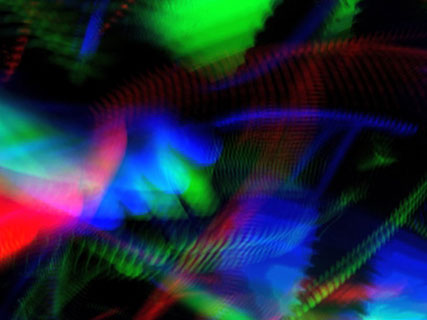
Transforma & O.S.T.,
“Synken”, 2007.
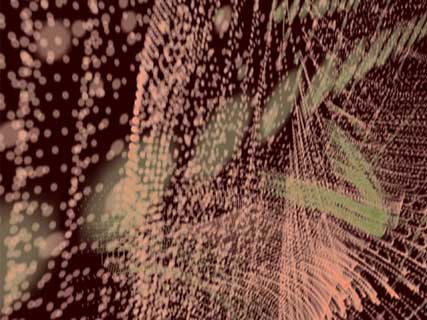
Ryoichi Kurokawa,
2007.
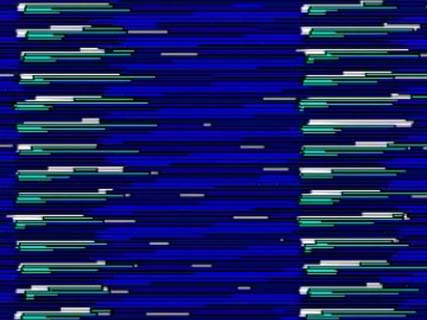
Billy Roisz & dieb13, “NotTheSameColor”,
2004.
An aesthetic of flux
 Lets go down a floor now to go to the “AV Club” where the festival organisers have given Marco Mancuso Carte blanche for an evening. Mancuso is the founder of the Italian Digicult project devoted to digital culture. He presents several audiovisual performances under the same name, entitled: “+39:Call for Italy”. Performances of the “Path to Abstraction” from Quayola to “op7” and on to “Otolab” follow one another and have several points in common. Quayola, is a single person while Otolab is a collective, but all share an equal interest in electronic music. There is a question in these performances of the representation of incessant flux. During “Path to Abstraction”, all the graphic elements that appear based on the rhythm of sounds, before disappearing, evolve around the invisible vertical line that divides the projection space in two. And during forty minutes, it is a multitude of two-dimensional coloured primitives that jostle each other on the screen, thus participating in the composition of the abstract paintings that shoot out of the blackness before disintegrating into oblivion.
Lets go down a floor now to go to the “AV Club” where the festival organisers have given Marco Mancuso Carte blanche for an evening. Mancuso is the founder of the Italian Digicult project devoted to digital culture. He presents several audiovisual performances under the same name, entitled: “+39:Call for Italy”. Performances of the “Path to Abstraction” from Quayola to “op7” and on to “Otolab” follow one another and have several points in common. Quayola, is a single person while Otolab is a collective, but all share an equal interest in electronic music. There is a question in these performances of the representation of incessant flux. During “Path to Abstraction”, all the graphic elements that appear based on the rhythm of sounds, before disappearing, evolve around the invisible vertical line that divides the projection space in two. And during forty minutes, it is a multitude of two-dimensional coloured primitives that jostle each other on the screen, thus participating in the composition of the abstract paintings that shoot out of the blackness before disintegrating into oblivion.
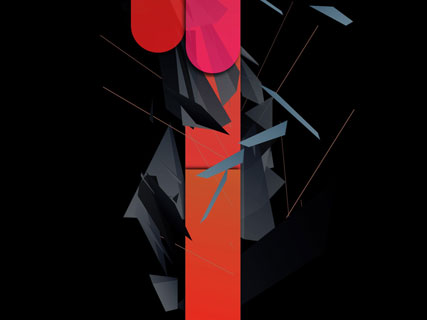
Quayola,
“Path to Abstraction”,
2007.
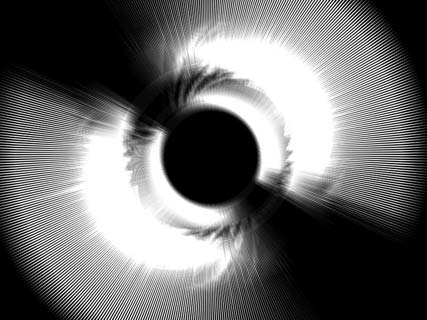
Otolab,
“op7”,
2006.
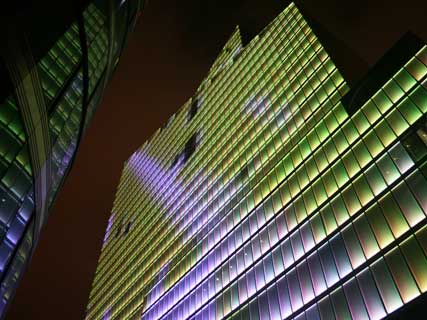
LAb[au],
“Touch +/- 0”,
2006.
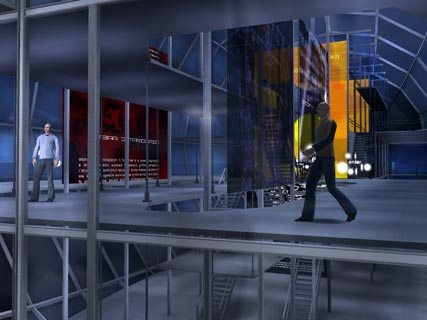
Workspace Unlimited,
“Extension”, 2003.
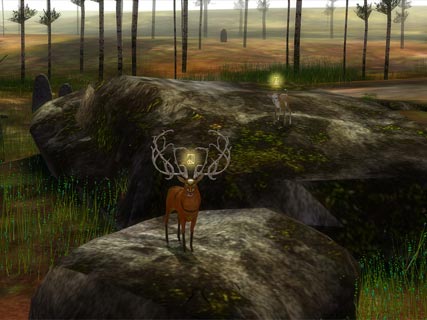
Tale of Tales,
“The Endless Forest”,
2005.
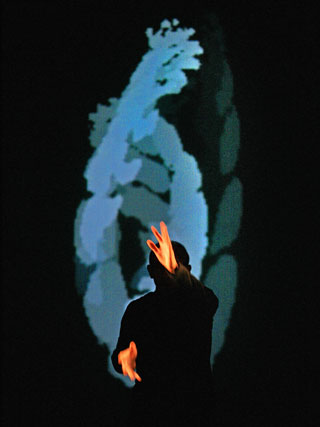
Thierry De Mey
& Jean Geoffroy,
“Light Music”,
2004, © Arthur Péquin
Bodies and lights
 We know that digital technology and media also participate in the decompartmentalisation of artistic practices. So a few Belgian choreographers and composers following the example of Michèle Noiret, Todor Todoroff and Thierry De Mey, have grabbed hold of sensing devices to invent new forms of theatrical writing. And here it’s the body, augmented by machines, that makes a link between the image or the light and the sound as in Thierry De Mey’s performance “Light Music” whose title tells us that it “authorises a play on words around the idea of “light music” because the instrumentalist has no "instrument". The instrumentalist is Jean Geoffroy who, situated in the centre of the stage in the dark, sculpts the sounds that we perceive and controls the ephemeral traces that are projected behind him by moving his hands into a zone of light in front of him. These multiple layers literally become one with Jean Geoffroy who extracts sounds with his hands and whose movements are converted into as many luminous traces.
We know that digital technology and media also participate in the decompartmentalisation of artistic practices. So a few Belgian choreographers and composers following the example of Michèle Noiret, Todor Todoroff and Thierry De Mey, have grabbed hold of sensing devices to invent new forms of theatrical writing. And here it’s the body, augmented by machines, that makes a link between the image or the light and the sound as in Thierry De Mey’s performance “Light Music” whose title tells us that it “authorises a play on words around the idea of “light music” because the instrumentalist has no "instrument". The instrumentalist is Jean Geoffroy who, situated in the centre of the stage in the dark, sculpts the sounds that we perceive and controls the ephemeral traces that are projected behind him by moving his hands into a zone of light in front of him. These multiple layers literally become one with Jean Geoffroy who extracts sounds with his hands and whose movements are converted into as many luminous traces.
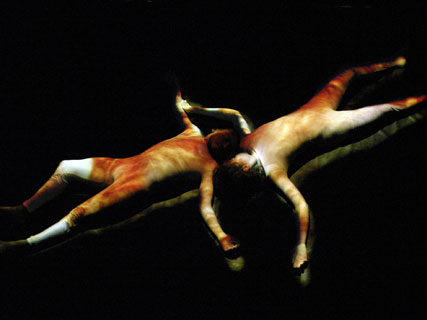
Ingrid Simon
& Sébastien Monnoye,
“Drifting Floor”,
2007, © Strange Milena - Sofam.
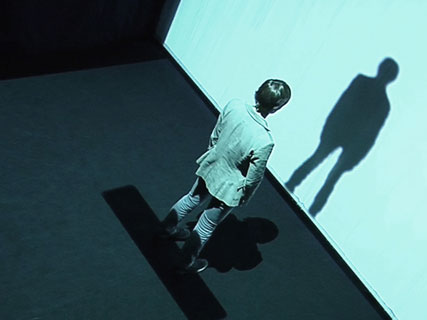
Tom Heene
& Yacine Sebti,
“Salt Lake”,
2007.
Written by Dominique Moulon for "Images Magazine" and translated by Geoffrey Finch for "newmediaart.eu", this article is also available in French on "nouveauxmedias.net".